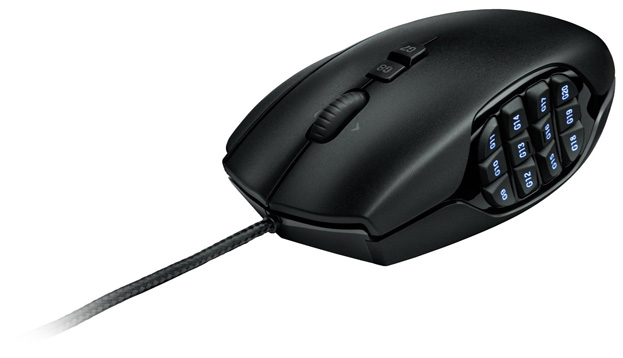With the gaming world always changing, a company like Logitech, which offers an ever-evolving line-up of products to meet these shifting needs, seems to stand out.
All of Logitech’s pro-gamer products look and sound like they belong on a spaceship – they’re all designed with angular black plastic and glowing blue lines, and each features the newest optical technology for reliable performance.
With names like Daedelus Prime, Proteus Core and Hyperion Fury it’s no wonder gamers are so eager to blindly dish out their dough and get their hands on these top-of-the-line gaming mice.
But just how much goes into designing these small gaming peripherals According to an article done by Kotaku UK, a whole lot.
First, Logitech considers a mouse’s durability. There’s a room on Logitech’s campus in Lausanne, Switzerland full of contraptions specifically designed to torture PC hardware. For example, one test includes pneumatically-powered metal rods insistently click on mouse buttons faster than any human hand. Other things that Logitech has done to “test” its mice include: driving trucks over them, dropping them from great heights, strapping them to strange turntable devices that spin around and around at crazy speeds to test their pinpoint accuracy on different surfaces, and fixing them to the end of a pneumatic metal arm that swings wildly from side to side.
“The goal is really to torture stuff,” said Maxime Marini (Logitech’s senior director of engineering and gaming development) to Kotaku. “We stress it in every possible way. At the end, the goal is that whatever gets out of here is 100 percent perfect and has no issues.”
In addition, these mice also cost millions to develop. According to its latest financial report, Logitech spent over 16 percent of its gross profit on research and development in the six months from March to September this year: over $63 million. While that figure covers all of Logitech’s business, the company’s high-end mice are likely to be a large piece of that R&D cost.
In addition to the Room of Tortured Hardware, Logitech’s Swiss campus contains this insane room, designed to filter out all signal interference to test wireless mouse response times. This room cost 550,000 Swiss francs ($571,000 USD). The equipment outside, which precisely maps the radiation that the isolated mouse emits, cost a further 250,000 Swiss francs ($259,000 USD).
“It’s millions of dollars, that you invest,” Maxime said to Kotaku. “There are a lot of people who touch a project like this: at one time, it’s maybe 20 or 30 people. You have two or three guys on the software, mechanical engineers, electronics engineers, then the management, the people doing all the materials, the finish, the paint… one guy working on the keys, the chromatics… it adds up. It’s often seven figures. [More so] if you do wireless stuff, you have to pay for all the compliances in all the countries you want to sell it in, which can be tens of thousands of dollars. And then there’s all the money you spend on advertising and marketing.”
All this may make someone wonder, is it all worth it
“The profit margin varies product by product,” said Maxime. “The global profit margin was 38 percent last quarter – some products are higher than that, some are lower. But some of the high-end products, honestly, if you really want to do them well then it’s not that easy to have a good margin. You can’t just keep increasing the price. So on some of the high-end products we do not have a good margin because they are tough to make and there are a lot of very expensive components.
“You can do the best product in the world, but if people don’t know about it… that’s something we’re changing now, we were always an engineering company, quite nerdy, but now we’re trying to explain better to people that we do.”
Logitech is considered an extremely “nerdy” engineering company to most. It has spent 33 years making mice, suggesting the people working there take pride in making the best ones.
“The engineers have pride in the products that they’ve built,” says Ujesh Disai, general manager of Logitech’s gaming division. “I’ve seen other companies think that gaming peripheral means get a regular peripheral, paint it fancy colours, maybe out some lights on it, do some real glitzy, flashy marketing, and that equates to gaming peripheral. That’s not what we try to do here. We’re trying to build a differentiated product line specifically for gamers.”
The scene from League of Legends’ Worlds tournament.
All this being said, some research puts the eSports viewing audience at more than 70 million people. Perhaps spending seven-figure sums on making computer mice for these gamers to use isn’t such an indulgent thing to do.

